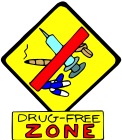Beginning in 2019 employers that are required to electronically file their OSHA 300A form data will have to do so by March 2. OSHA had been phasing in the electronic rule and has recently finalized an updated rule affirming the March 2 date.
Employers with 20 or more employees (at any point in the calendar year) and in certain industries (agriculture is on the list) are required to send in OSHA 300A log summary data each year by March 2 of the following year. So what this means is that cotton gins that had 20 or more employees must send in their OSHA 300A log summary information to OSHA for calendar year 2018 by March 2, 2019.
Continue reading
